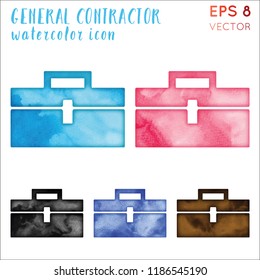Distinguishing Between Interior And Exterior Paint: Significant Differences And Their Makes Use Of
Distinguishing Between Interior And Exterior Paint: Significant Differences And Their Makes Use Of
Blog Article
golden valley painter -Fisker copyright
When you're picking between interior and exterior paint, it's important to comprehend their fundamental differences that affect both performance and visual appeals. Inside paints are crafted for lower VOC degrees and smoother surfaces, making them perfect for interior rooms, while exterior paints are designed to withstand harsh weather conditions and UV exposure. Each type serves an unique function, but understanding when to make use of one over the other can greatly affect your job's outcome. So, what variables should you think about when making your choice?
Structure and Solution
When choosing in between exterior and interior paint, recognizing their make-up and solution is critical. Interior paints usually consist of a lower amount of volatile organic compounds (VOCs), making them much safer for interior air quality. You'll discover they often have a smoother coating, which boosts their ability to resist stains and allows for easier cleaning. They're made to withstand the roughness of indoor settings, including varying humidity levels and temperature level changes.
On the other hand, outside paints are developed to sustain harsher problems. They usually consist of greater degrees of pigments and ingredients to withstand fading from UV rays, along with to stop mildew and mold and mildew growth. Their composition consists of more binders and resins, which offer much better bond to surfaces revealed to the aspects. This ensures the paint can hold up against rain, snow, and changing temperature levels without peeling or cracking.
Performance and Resilience
Assessing efficiency and durability is vital when choosing in between interior and exterior paint. Interior paint is created for surface areas that experience less wear and tear. It usually withstands fading and scuffing, making it optimal for living rooms and rooms. Nonetheless, it may not hold up well in high-moisture locations like kitchens and bathrooms without appropriate solution.
On read review , exterior paint encounters harsher problems. It's crafted to withstand UV rays, rain, and temperature level fluctuations. This kind of paint commonly contains ingredients that protect against mold and mildew and mold growth, guaranteeing durability in numerous environments. When you utilize outside paint, you can expect it to last numerous years much longer than indoor paint, provided it's applied properly.
One more vital distinction depends on the surface alternatives. Inside paints frequently have a selection of surfaces for visual appeal, while outside paints focus on longevity over luster. If you're searching for something that can manage the components, exterior paint is your best bet.
In contrast, if you're concentrated on interior aesthetics with less concern for extreme problems, interior paint could be ideal. Inevitably, your option needs to straighten with the details demands of the environment.
Aesthetic Factors to consider
A fresh layer of paint can transform a space, however aesthetic factors to consider play an essential role in your option in between exterior and interior choices. When you're picking paint, think about the mood you want to develop. Interior paint allows you to explore a wider series of colors and coatings, allowing you to express your personal design and enhance your home's atmosphere. Whether you opt for soft pastels or vibrant hues, the ideal indoor paint can make your areas really feel cozy, lively, or calm.
On the other hand, exterior paint requires to straighten with your home's style and the surrounding setting. Right here, you're not just making a style statement; you're also thinking about aesthetic charm. Picking colors that harmonize with your community can enhance your home's value and aesthetic appeal. Keep in mind that exterior paint is additionally based on fading and climate changes, so choosing a classic color can conserve you from frequent repainting.
Ultimately, take into consideration exactly how each choice fits your vision. By aligning your paint option with your wanted aesthetic, you can produce rooms that mirror your individuality while preserving functionality.
Verdict
When it involves choosing paint, understanding the vital distinctions between interior and exterior choices is necessary. Interior paints focus on visual appeals and reduced VOCs, making them ideal for boosting your indoor spaces. In contrast, exterior paints are made for longevity and weather condition resistance, securing your home from the components. By considering your certain demands and the environment, you can confidently choose the appropriate paint to accomplish the look and durability you want for your area.
